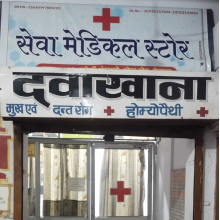The HIV Kit is an essential tool designed for the accurate detection and management of HIV. With a focus on swift testing and reliable results, this kit empowers healthcare providers and organizations to enhance their preventive health measures and ensure timely treatment for individuals at risk of HIV infection. The HIV Kit is essential for screening in various settings including clinics, hospitals, and community health programs. It significantly contributes to public health strategies aiming at reducing HIV transmission and promoting safe sexual practices. Each kit comes equipped with instructions, testing devices, and necessary components to carry out the tests efficiently in a secure environment. With the escalating rates of HIV infections worldwide, having access to a reliable HIV Kit can prove pivotal in identifying infected individuals early and providing them with the necessary treatment options. By promoting regular testing and education around HIV prevention, the HIV Kit plays a crucial role in the global efforts to combat this virus, safeguarding the health and wellbeing of communities.
Key Features
| Features | Description |
|---|---|
| Fast and Accurate Testing | Provides reliable results within minutes. |
| Easy to Use | Designed for both trained professionals and non-experts. |
| Comprehensive Instructions | Each kit includes clear guidelines for testing and interpretation of results. |
| Portable Design | Compact and lightweight for easy transportation to various locations. |
| Bulk Availability | Available in bulk for healthcare facilities and organizations. |
| Attributes | Description |
|---|---|
| Test Type | Rapid HIV Antibody Test |
| Sensitivity | 99.5% |
| Specificity | 99.1% |
| Storage Conditions | Store at room temperature (15-30°C) |
| Expiration Date | 2 years from the date of manufacture |
| Components Included | Test devices, alcohol wipes, and instructional manual |
*Disclaimer: The above description has been AI-generated and has not been audited or verified for accuracy. It is recommended to verify product details independently before making any purchasing decisions.
Country Of Origin: India
Symptoms of HIV Infection
Some individuals may experience flu-like symptoms 2 to 4 weeks after the initial infection. This early stage is called acute retroviral syndrome (ARS), and it can last a few days to several weeks. However, some individuals might not show any symptoms during this period.
Common early symptoms include:
Fever
Headache
Muscle aches and joint pain
Rash
Sore throat and painful mouth sores
Swollen lymph nodes, mainly around the neck
Diarrhea
Weight loss
Cough
Night sweats
Prevention and Treatment
If you suspect you are at risk or are experiencing symptoms, it’s essential to get tested and seek medical advice for appropriate care and management of HIV.



Inclusive of all taxes
You Save: ₹ 20.00

Dewas, India
Service Center, Retailer, Exporter, Wholesaler
GST- 23AAYPF7091C1ZL
FIEO Registered